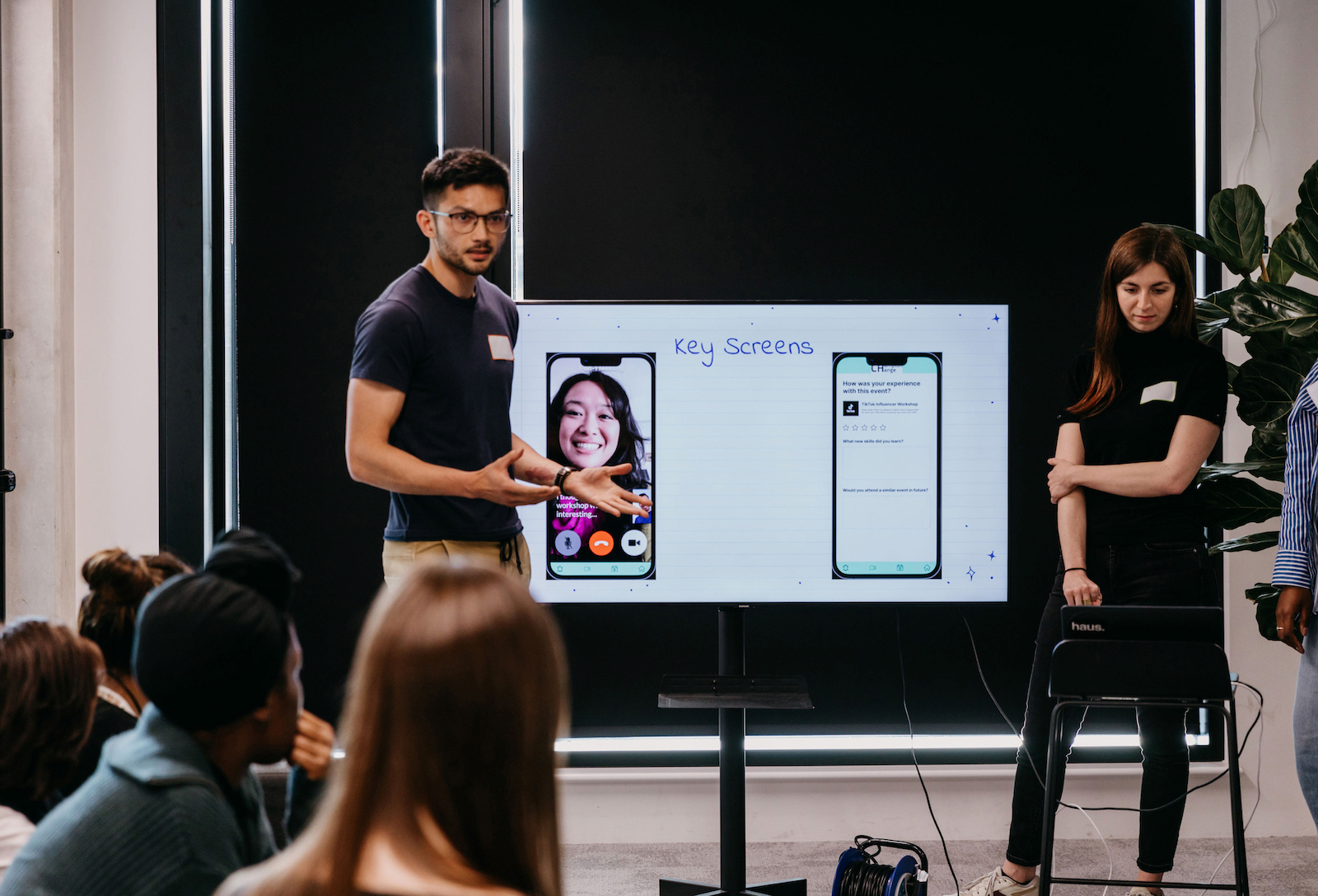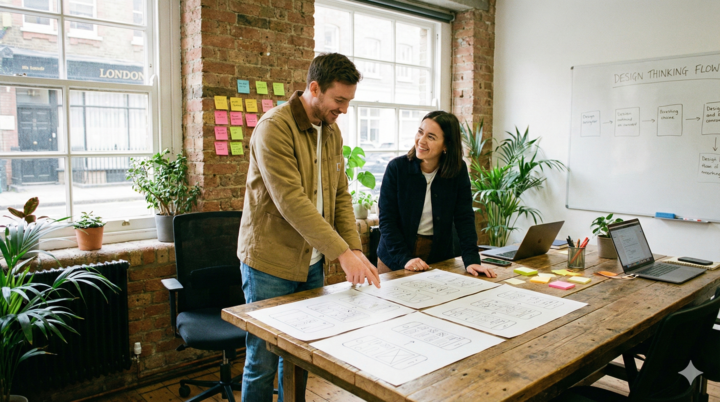Real-life projects: A pillar of the Experience Haus approach.
From fintech to healthcare to edtech and more – Experience Haus students apply their learnings immediately on to challenging design briefs set by real life stakeholders representing real life startups and small businesses.
Design is not just about creating aesthetically pleasing objects, but also about solving problems and finding solutions. And real-life challenges provide students with an opportunity to put their theoretical knowledge into practice, to understand the complexities of design and to develop critical thinking skills.

At our recent Design Day, our students worked on a real-life challenge set by the City of London Education Strategy Unit.
Throughout their learning journey, our students are forced to consider the practicalities of their designs, such as budget constraints, deadlines, and the client’s requirements, as well as taking into account the cultural, social and ethical implications of their work.
As educators, we firmly believe that the best way for our students to learn and hone their design skills is through working on real-life projects and design challenges. This approach is at the centre of all of our courses and design days, and it is one of the things that sets us apart from other design schools. Let’s explore a few reasons why we feel this is so important and a pillar to our approach.
Context is key.
The first reason why real-life projects are so effective is that they provide a context for the design work. When students work on projects that have real-world implications, they are able to see how their design decisions affect not just the appearance of the project but also its functionality and impact on users. This helps students to think more deeply about the impact of their work and to consider the broader implications of their decisions. This is essential for developing a well-rounded understanding of design and its impact on the world.

Presentation and storytelling skills also come to life when working on real-life projects.
Providing a sense of purpose.
Additionally, real-life projects give students a sense of purpose and motivation, as they are working on something tangible and impactful. This can lead to a more engaged and motivated student, who is more likely to invest in extra effort and produce higher-quality work. This, in turn, leads to a more confident and capable designer, ready to tackle real-world challenges in their future careers.
Understanding the end to end process.
Another key benefit of real-life projects is that they allow students to experience the design process from start to finish. In a traditional classroom setting, students may only work on part of a project or may only see one aspect of the design process. By working on real-life projects, students are able to see how all the different pieces fit together and gain a better understanding of the overall design process, and an appreciation of how design teams come together. This can help to build a sense of ownership over the work and a deeper understanding of the steps involved in creating a successful design.
A platform for growth.
It is important to remember that the goal of working on real-life projects is not just to produce a final product but also to provide students with a platform for learning and growth. This means that students should be encouraged to take risks and explore new ideas, even if they are not certain of the outcome. At Experience Haus, we encourage our students to embrace this spirit of experimentation and to be open to new perspectives and approaches.
Enhancing soft skills.
Working on real-life projects also helps students develop important skills such as time management, teamwork and communication. Collaborating with other students or clients on a project teaches students to compromise and find common ground, skills that will serve them well in their future careers. Effective communication is also a crucial aspect of the design process, and students will learn to articulate their ideas and present their work in a professional and convincing manner.
Portfolio pieces.
One of the biggest benefits of working on real-life projects is the opportunity to gain real-world experience. Students can use these projects as a portfolio piece, which they can showcase to potential employers and demonstrate their competence and skills. This can give them a competitive edge in a crowded job market, and can help them to secure job opportunities in their desired field.
Here are some tips for those who are considering working on real-life projects as a way of developing their skillset in the experience design space.
- Start small: Don’t be afraid to start with smaller, less complex projects. This will help you to build your confidence and skills gradually.
- Collaborate with others: Working with other students or clients on a project will help you to develop important skills such as teamwork and communication.
- Be open to feedback: Real-life projects are a great opportunity to receive feedback from professionals and peers, which can help you to improve your work and grow as a designer.
At Experience Haus, we work closely with industry partners and clients to ensure that our projects are aligned with current trends and challenges in the design world. We tap into our growing network of incubators, accelerators, business schools, universities, co-working spaces and more, to find the most current and challenging projects for our students to work on. This helps to keep our students engaged and inspired and also provides a sense of the real-world demands of the design industry. But above all, students leave their Experience Haus learning journey with credibility and confidence they can move forward with as they begin their design careers.



